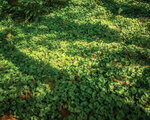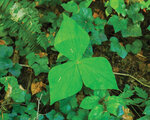

English Ivy is a noxious weed with a native range of Europe, western Asia and northern Africa. The ivy species from across the pond has made itself home in many landscapes and public lands but provides no benefit to any habitat in the United States, especially right here in north Clark County.
In Washington, four subspecies of English ivy are labeled as Class ‘C’ noxious weeds: Balitca, Pittsburgh, Star and Hibernica, according to the Washington State University.
English ivy is an evergreen, perennial vine. Vines can reach a length of 99 feet and rapidly grow on vertical subjects, according to the Noxious Weed Control Board of Washington State. The vine has a dark green base and a light green vein system with an average size of 1 to 6 inches in width.
According to the Noxious Weed Control Board of Washington State, English ivy outcompetes native plants, which reduces animal foraging habitat. Because it can grow rapidly, the ivy will quickly take over the understory of forest floors, by choking out sunlight to the seedlings of slower-growing native plants. The ivy species also kills the understory and overstory trees by shading them out. Trees can develop diseases and even have stronger storm damage with the added weight of the ivy.
To cattle and people, the sap from the stems can cause skin irritations and rashes. The fruit and leaves of the plant can be toxic, as well. In order to remove the bothersome ivy, the control board people remove the plants by hand.
“In western Washington, fall through spring, before dormant plants begin to grow, is a great time to pull ivy,” the Noxious Weed Control Board of Washington State explains in an article. “Be careful when pulling ivy in the spring and summer to not damage native and other desirable plants in the area.”
For plants that have developed a vine up a tree, the control board states people should cut the vines around waist to chest height, which will cause the ones above to slowly die. The entire plant should be removed as stem and root fragments can resprout.
According to the Cowlitz County Noxious Weed Control Board, one plant can produce tens of thousands of fruits each year and can live for over 100 years.
To learn more about English ivy and management options, visit hortsense.cahnrs.wsu.edu/fact-sheet/weeds-english-ivy-hede ra-helix/.